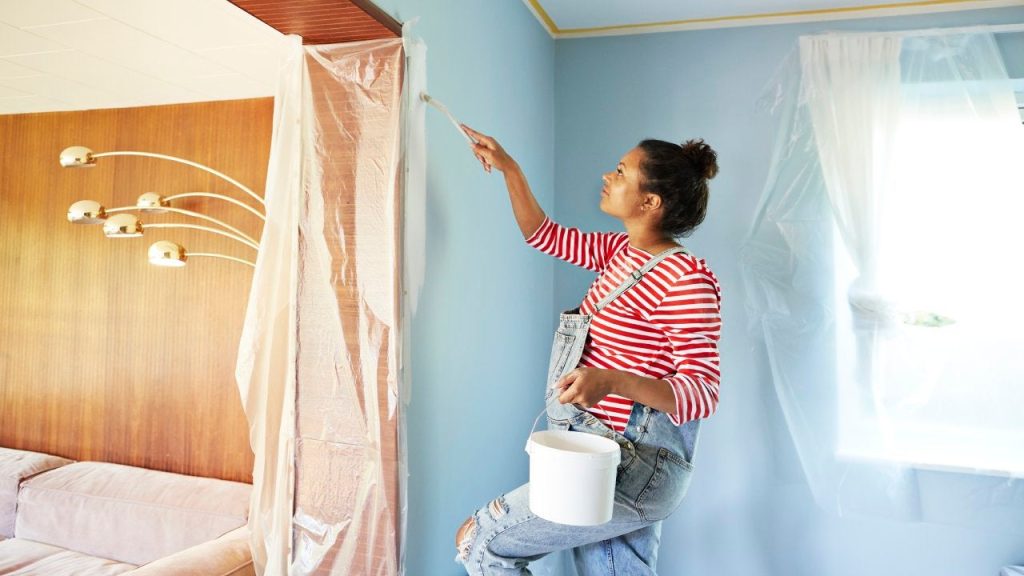With the home improvement season in full swing, it’s likely that you’re feeling the impact of inflation on your budget as you research materials and contractors. And if you’re like the nine out of 10 homeowners surveyed by Today’s Homeowners that reported having a project planned for 2023, turning to a home improvement loan may seem like the best option.
But is right now the best time to get a home improvement loan? Due to the high interest rates and the current rate of inflation, the answer will look different for everyone, but most should exercise caution.
Why it may not be the best time to take out a home improvement loan
While all forms of debt — especially home improvement loans — are not inherently bad, there are reasons why you’ll want to dig into other options before turning straight to a lender to get the funds you need.
A home improvement loan is essentially an unsecured personal loan and is different from a home equity product; it doesn’t tap into your home’s equity or require any of your assets as collateral. While this may seem like a desirable option to some, personal loans should be carefully considered given current high interest rates.
Interest rates have reached historic levels in 2023. In an attempt to cool off the inflated economy, the Federal Reserve has raised interest rates a total of 11 times between 2022 and 2023. While not directly tied to the Fed rate, personal loan rates have been affected as well, averaging over 11 percent in August 2023.
When will home improvement loan rates drop?
While the Fed has slowed the speed of rate increases, it has signaled that there will be more hikes in 2023. Even though there’s little known about what rates could look like for the remainder of 2023, we do know that rates aren’t decreasing anytime soon, and there’s no definitive answer as to when they’ll start dropping.
“Based on the Fed’s behavior, it is possible that interest rates may start to go down in the second half of 2023,” says Joseph Catanzaro, financial advisor at Oak and Stone Capital Advisors.
“However, it is important to remember that the Fed’s policies are continually evolving, so it is impossible to say for sure when rates will go down,” he adds.
When a home improvement loan is worth considering
Due to the cost of high mortgage rates, small, functional renovations and projects are encouraged rather than selling and moving right now. Plus, improvements that fit well within your budget and are guaranteed to raise the value of your home are never a bad idea.
Catanzaro recommends that borrowers assess their financial stability prior to looking for a loan. “If you have stable income and good credit, you’re more likely to secure a favorable loan,” he says. He also urges borrowers to consider the urgency of the renovations, suggesting that it may be a good time to borrow if the project is essential or could prevent significant issues down the road.
If you meet the following criteria and don’t wish to tap into your home’s equity, then it may be worth looking into a personal loan to fund your next project.
- You have good-to-excellent credit.
- You’ve prequalified for multiple loans and have been offered competitive rates.
- You’re not charged an origination fee.
- The project is on the smaller side and doesn’t require a large loan.
- The return on investment is high.
- You’re more than certain that you can make the monthly payments.
- You have a clear credit report with a positive, developed repayment history.
How to find a home improvement loan
While some lenders offer loans specially designed for home improvement, most banks, credit unions and online lenders offer personal loans that can be used on renovations.
Most online lenders allow borrowers to use the funds on nearly every legal expense. However, some have usage restrictions so always comb through the terms and conditions before applying or call the customer service department to make sure you can use the loan for home projects.
Once you’ve found lenders that match your needs, prequalify with at least three companies to make sure you’re offered a competitive rate. Prequalification allows you to check your predicted rates and fees without impacting your credit. Once your offers start to flow in you can then compare to find the lowest interest rate.
Before signing on the dotted line, make sure you’ve looked at your entire portfolio of options, especially with your current bank or credit union. Some institutions offer member-exclusive benefits or discounts, like interest rate reductions and repayment flexibility.
Alternatives to a home improvement loan
Depending on the scope of your next project, there are a few alternative funding options to explore before turning immediately to a loan.
Pay in cash
For those with a smaller project and savings, this is the best way to pay. There’s no interest, no monthly payments to keep up with and no fees. However, this isn’t obtainable for most borrowers looking to make large-scale changes. For those wanting to make light updates to their home, paying in cash is ideal.
If you come up short on cash and there isn’t an immediate need to get the job done, calculate how long it’ll take to build your savings to reach the total cost and if possible, reallocate a little extra each month to the renovation fund to avoid taking on a high-interest loan.
Borrow from family members or friends
Although this isn’t most borrowers’ first option, it’s important to consider utilizing this method if the opportunity is there. Ask close and trusted friends or family members to lend you the money with the understanding that you’ll pay the loan back in-full within a certain time frame.
0 percent APR credit card
While it entails taking on more debt, it may be wise to look into credit cards that offer 0 percent APR periods, especially if your project is smaller.
0 percent cards offer an introductory period — typically between 12 and 24 months — in which no interest accrues. If you can feasibly pay down the balance within the introductory period then you’ll save potentially thousands in interest.
It’s only advised to apply for this method if you’re 100 percent sure of your ability to pay down the balance. After the introductory period is up, you’ll likely get hit with an interest rate that’ll be much higher than what you’d get with a personal loan.
Government-sponsored renovation loans
Although still technically a loan, some government-backed home improvement loans are offered to those who qualify and charge interest as low as one percent.
Eligibility and assistance level will vary depending on the loan, but qualifications are based on a number a factors, including but not limited to:
- Where you live.
- The type of property you want to use the loan on.
- Your income level.
- Your age.
Along with the need-based federal loans, there are also need-based loans available through state or county government programs.
Read the full article here














